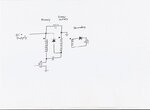Ravi_H
Junior Member level 3
As I know, as the transformer primary inductance value increases, the flyback operates in continuous mode. In this mode the feedback control becomes difficult due to RHP zero,
but I want to know, will I have the problem in controlling the output current and voltage in CCM using PID control ?
When I reduce the transformer inductance, the flyback should be operating in DCM, in this the snubber value drastically increases, as the input current increases. Hence the wattage of RCD or resistor zener combination of snubber increases beyond 30 W.
Please suggest me implementable design.
but I want to know, will I have the problem in controlling the output current and voltage in CCM using PID control ?
When I reduce the transformer inductance, the flyback should be operating in DCM, in this the snubber value drastically increases, as the input current increases. Hence the wattage of RCD or resistor zener combination of snubber increases beyond 30 W.
Please suggest me implementable design.

